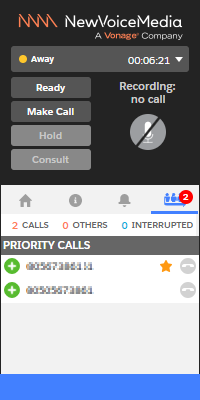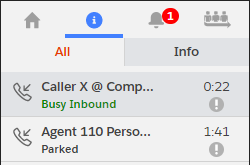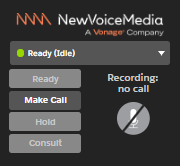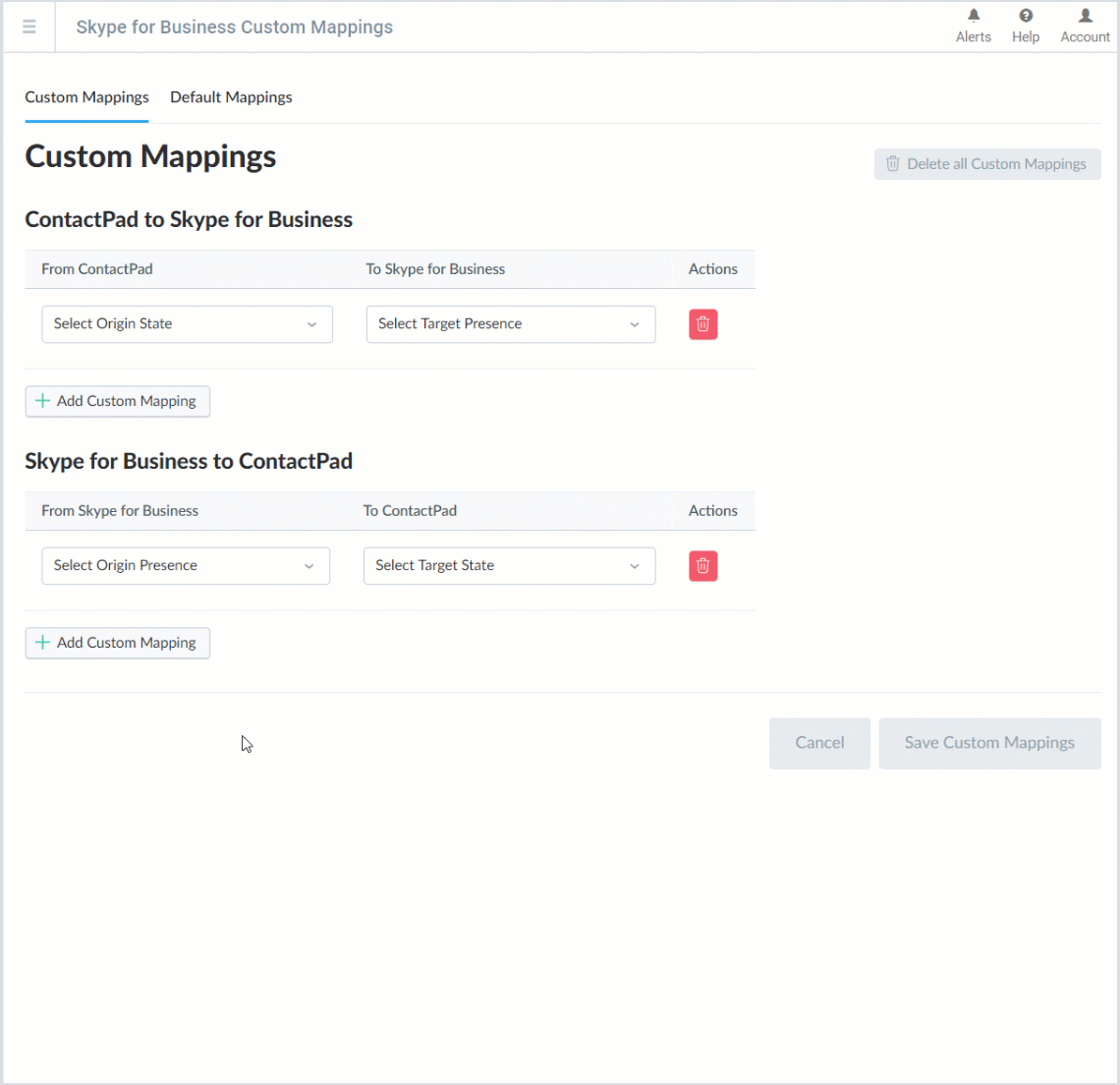This Winter we will be releasing released the following features:
| Panel | ||||||||||||||
|---|---|---|---|---|---|---|---|---|---|---|---|---|---|---|
| ||||||||||||||
|
Documentation relating to Winter '20 features will be made available week commencing 4th November
General Availability Features
Insights Stats API and Dashboard enhancements for omni-channel
Insights Stats API
From Since Winter '20, the Insights Stats API will provide provides data about non-call interactions (emails, SMS, chat, and so on). Such data includes interrupt, park, and abandon events.
For the latest documentation of Insights Stats API, see NewVoiceMedia Insights Stats API.
Dashboards
The Dashboards feature uses the Insights Stats API to retrieve information about both call and non-call interactions. The additional data provided by the API will soon be is now viewable in Dashboards. This data will give gives you more insight into non-call interactions.
For information about viewing dashboards, see Using Dashboards.
Priority call handling
Priority call handling includes the following features:
Priority call configuration
CurrentlyPreviously, 'priority calls' are were only calls that NewVoiceMedia delivers to an agent's personal queue. Such ; such calls are only a priority for the intended agent. From Since Winter '20, administrators will be able to can also configure priority calls based on the skills required to handle them. These calls will appear in priority calls lists in eligible agents' ContactPads.
For information about priority call configuration, see Configuring virtual queues.
Call parking
With priority call handling, an agent will be is able to park an existing call to receive a priority call. Parking the will call does not end the call; instead, parking will put puts the call on hold while the agent receives the priority call. The agent will be is able to return to the original call and then alternate between the two as required.
For information about call parking, see Parking a call.
Interaction claiming
From Since Winter '20, if enabled for your account, an agent eligible to receive a priority call can temporarily claim that call. Claiming a call removes it from all other eligible agents' priority call lists and reserves the call for the agent. Claiming prevents multiple eligible agents from ending their current calls to receive a call that only one agent will receive; it also prevents an agent from receiving a non-priority call that has been waiting longer than the priority call.
For information about call parking, see Claiming a call.
Contextualized notifications and ContactPad call data
By default, when a call is routed to an agent, the caller's CLID appears in the agent's ContactPad and in call notifications for priority calls. Soon Now, administrators will be are able to override the details in both ContactPad and priority call notifications. Instead of seeing a caller's CLID, agents will can view details about the caller such as their name, account, or account renewal date. Along with the customized data, agents will be are able to see up to five queuing priority calls in the priority calls list.
For information about contextualization notifications and ContactPad data, see Setting a display name for an inbound call.
Call notifications
Currently, an agent receives a Previously, agents received priority call notification notifications when NewVoiceMedia routes a call routed calls to the agentagents' s personal queuequeues. From Since Winter '20, agents will receive a priority call notification notifications for any priority call that they are eligible to receive.
For information about call notifications, see Call notifications.
ContactPad presence
By default, ContactPad displays an agent's state in the state bar. Agents The agent can manually change their state at any time—available states vary depending on their current activity and on what other features are enabled for their account. An The agent's state can also change automatically, also depending on their current activity. After
Since Winter '20, if the ContactPad presence feature is enabled for your account, ContactPad displays additional information in the state bar. This additional information will give gives more insight into whether an the agent is available to work on interactions.
For information about ContactPad presence, see ContactPad with presence.
Support for OpenID
CurrentlyPreviously, users can could log in to the NewVoiceMedia platform using single sign-on through Salesforce, Microsoft, Vonage, or a combination. Users log logged in to the NewVoiceMedia platform by logging in first to their linked Salesforce, Microsoft, or Vonage account. From Since Winter '20, administrators will be able to can also configure single sign-on for external identity providers. Applicable external identify providers must support OpenID Connect (OIDC). When configured, users will be are able to log in through that external provider as well as previously available providers.
For information about configuring single sign-on for an external provider, see Configuring single sign-on.
Skype for Business: presence integration
From Since Winter '20, the pilot Integration with Skype for Business feature will be is generally available. Enabling the feature synchronizes an agent's state in ContactPad and presence in Skype for Business.
With default state and presence mappings, if an agent's presence in Skype for Business changes to Busy (either manually or automatically), NewVoiceMedia changes the agent's state in ContactPad to Extended Away. In this scenario, NewVoiceMedia will not route interactions to the agent. If an agent clicks to make a call in ContactPad, which automatically changes their state in ContactPad to Ready (Offline), the agent's presence in Skype for Business changes to Do not disturb. In the latest version of the feature, administrators can configure custom state and presence mappings.
For information about Skype for Business integration, see Integration with Skype for Business.
Queued callback configurable CLID
Setting up a callback enables the caller to hang up their phone rather than waiting for an agent to answer their existing call. When an appropriate agent becomes available, NewVoiceMedia makes an outbound call from that agent to the caller. By default, NewVoiceMedia makes the callback to the original CLID.
From Since Winter '20, administrators will be able to can override the number that NewVoiceMedia should use for each callback.
For information about overriding the number for queued callbacks, see Setting up queued callbacks.
Transcription Enhancements
Transcription improvements through changes to the transcription engine. Global English has now been introduced across all regions. This means an American can speak to an Australian in English and the transcription will be equally good for each party even though they are speaking a different flavour of English. Compared to having a transcription engine for a specific English accent, this Global English model helps to improve the transcription when speaking to non-Native English speakers in an English speaking contact center.)
...





